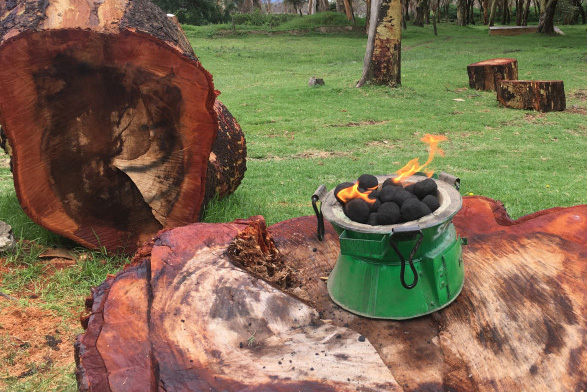For generations, farmers across Africa have relied on firewood, charcoal, and kerosene to meet their daily energy needs—cooking, lighting, and even powering basic farm tools. But these traditional fuels come at a cost: deforestation, indoor air pollution, and soaring energy expenses.
Now imagine a different future: where farm waste becomes cooking gas, where cow dung powers households, and where organic residues generate clean electricity.
This future isn’t just possible—it’s already unfolding in Kenya, thanks to the work of AGriKilimo Consultancy Services. Through its bioenergy and clean technology solutions, AGriKilimo is helping farmers turn agricultural waste into a powerful resource for both energy and income.
The Energy-Agriculture Nexus
Energy and agriculture are inseparable. You need energy to irrigate, process, preserve, and transport produce. Without reliable and clean energy, smallholder farmers are stuck in a cycle of low productivity and high costs.
But traditional energy sources—especially firewood and fossil fuels—are becoming unsustainable. They degrade the environment, expose families to toxic smoke, and leave farmers vulnerable to rising fuel prices.
This is where bioenergy comes in. It’s renewable, locally available, and tailored to the realities of rural farming communities.
What Is Bioenergy?
Bioenergy is energy derived from biological materials, including crop residues, livestock waste, and other organic byproducts. Unlike fossil fuels, bioenergy is part of the natural carbon cycle and can be replenished sustainably.
There are several types of bioenergy technologies, but AGriKilimo focuses on three major areas:
- Biogas and Biodigesters
- Waste-to-Energy (Biomass Utilization)
- Carbon Farming and Greenhouse Gas Mitigation
Let’s break each one down—and see how they’re transforming farms across Kenya.
1. Biogas & Biodigesters: Cooking With Cow Dung
At the heart of AGriKilimo’s clean energy drive is biogas—a technology that converts animal waste (usually cow dung) into methane gas through a process called anaerobic digestion.
Here’s how it works:
- A biodigester tank is installed on the farm.
- Cow dung and water are fed into the tank daily.
- As the waste breaks down, it releases methane, which is piped directly into the kitchen as clean cooking gas.
- The by-product, known as bioslurry, becomes an excellent organic fertilizer.
The benefits? They’re huge:
- No more buying charcoal or firewood
- Dramatic reduction in smoke-related illnesses
- Improved soil fertility through bioslurry use
- Reduced deforestation and emissions
Farmers like John Mwangi from Nakuru are already seeing the change. “I used to spend hours collecting firewood. Now, with biogas from my cows, my family cooks faster, safer, and cheaper,” he says.
2. Waste-to-Energy Solutions: Nothing Goes to Waste
In traditional farming, crop waste is often burned or discarded. But AGriKilimo views waste as a resource waiting to be harnessed.
Through waste-to-energy projects, AGriKilimo supports:
- Biomass energy systems that use maize stalks, sugarcane husks, or coffee pulp for fuel
- Small-scale gasifiers that convert crop residues into heat or electricity
- Pelletization and briquetting of agricultural waste for clean-burning fuel alternatives
These technologies are helping farmers and processors power milling machines, dry produce, and even light up rural homes—without fossil fuels.
3. Carbon Farming: Earning from Conservation
In a world grappling with climate change, carbon is the new currency. Carbon farming involves practices that capture and store carbon in soils, trees, and plants—helping reduce greenhouse gas emissions.
AGriKilimo trains farmers on techniques like:
- Agroforestry
- Cover cropping
- Minimum tillage
- Organic soil amendments
Through these practices, farmers not only improve their soil health and crop yields—they can also qualify for carbon credit programs, opening a new income stream.
“Carbon farming has taught me that taking care of the land can also take care of my wallet,” says Rebecca Nyambura, an organic farmer in Nyeri who has adopted AGriKilimo’s practices.
Making Bioenergy Accessible
A key part of AGriKilimo’s success is making bioenergy technologies affordable and scalable. This means:
- Partnering with NGOs and county governments to subsidize biodigester installations
- Offering community-based training on system maintenance and safety
- Supporting local technicians and startups to build and repair systems
- Promoting local manufacturing of biodigester components to reduce costs
By working closely with local communities and institutions, AGriKilimo ensures that these innovations are not only introduced—but also owned and sustained by the people they serve.
The Ripple Effect of Clean Energy
The shift to bioenergy is doing more than saving trees and money—it’s empowering women, improving education, and boosting nutrition.
- Women and girls spend less time collecting firewood and more time on education or income-generating activities.
- Children study longer hours thanks to clean lighting and early evening meals.
- Farms become more productive with access to organic fertilizers and energy for irrigation.
It’s a classic case of small changes creating big impact—and it all starts with waste.
Policy and Partnerships Matter
AGriKilimo also plays an important role at the policy level, advocating for:
- Incentives for clean energy adoption in agriculture
- Support for smallholder access to renewable energy financing
- Integration of bioenergy into national climate and development strategies
They’ve worked with development organizations like SNV Netherlands and Africa Bioenergy Programme Limited, and contributed to projects that blend policy, innovation, and community engagement.
A Green Path Forward
As Kenya and other African nations chart their path toward climate resilience, energy security, and sustainable development, bioenergy offers a powerful bridge between agriculture and green growth.
AGriKilimo is proving that innovation doesn’t have to be imported or expensive. Sometimes, it starts right in the cowshed, the compost pit, or the maize field.
By unlocking the energy potential of organic waste, AGriKilimo is helping farmers light their homes, feed their soils, and power their future.
Conclusion: Waste Is Not the End—It’s the Beginning
In the traditional sense, waste is something to get rid of. But in the world AGriKilimo is building, waste is a starting point—a resource for clean energy, income generation, and environmental renewal.
As more farmers adopt bioenergy solutions, a new narrative is emerging: one where agriculture is not just about food, but about fuel, sustainability, and innovation.
And in this story, AGriKilimo is lighting the way—one biodigester, one training session, and one clean flame at a time.






